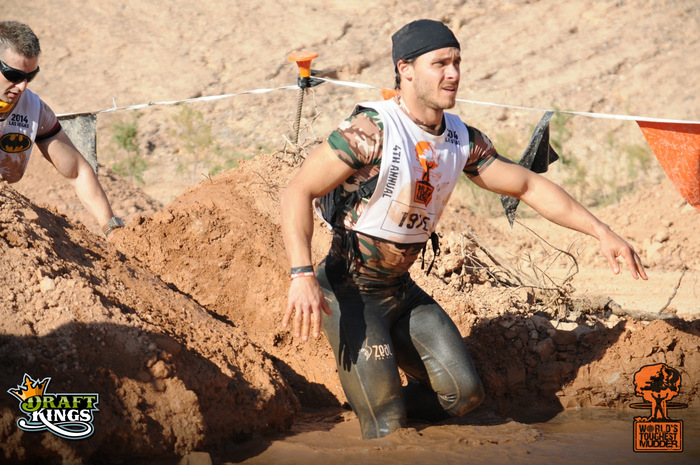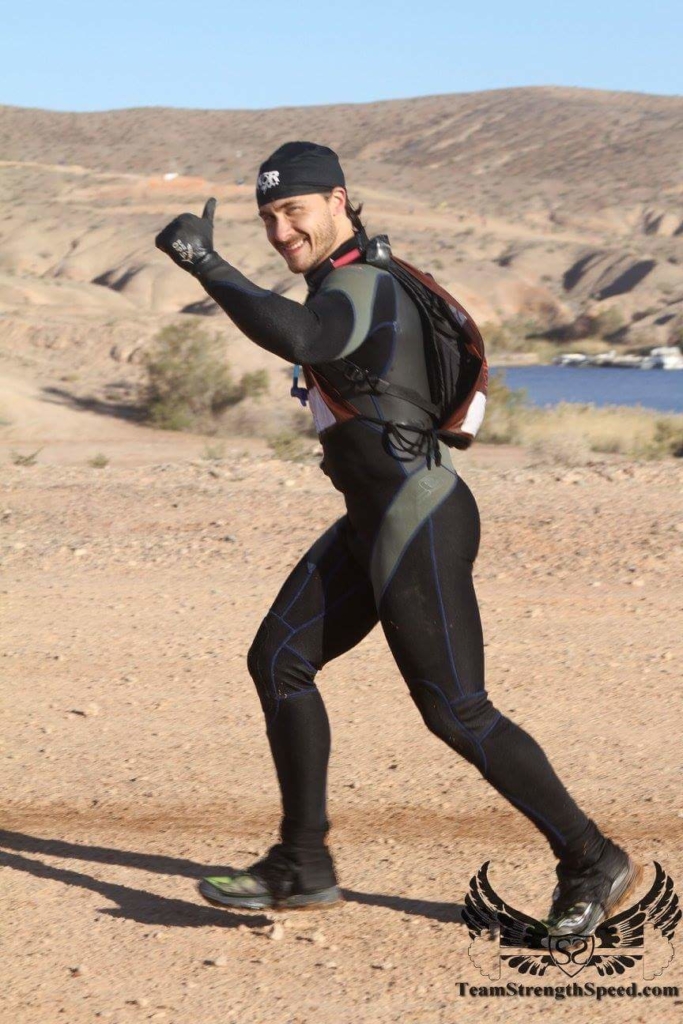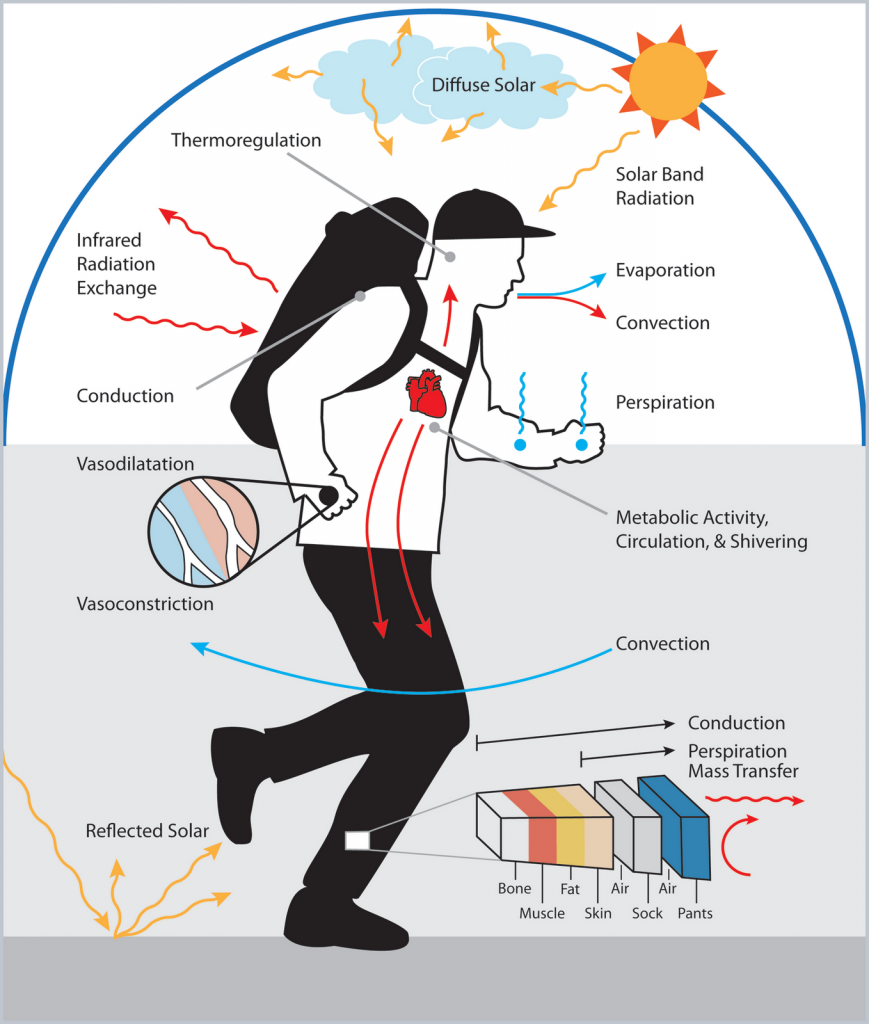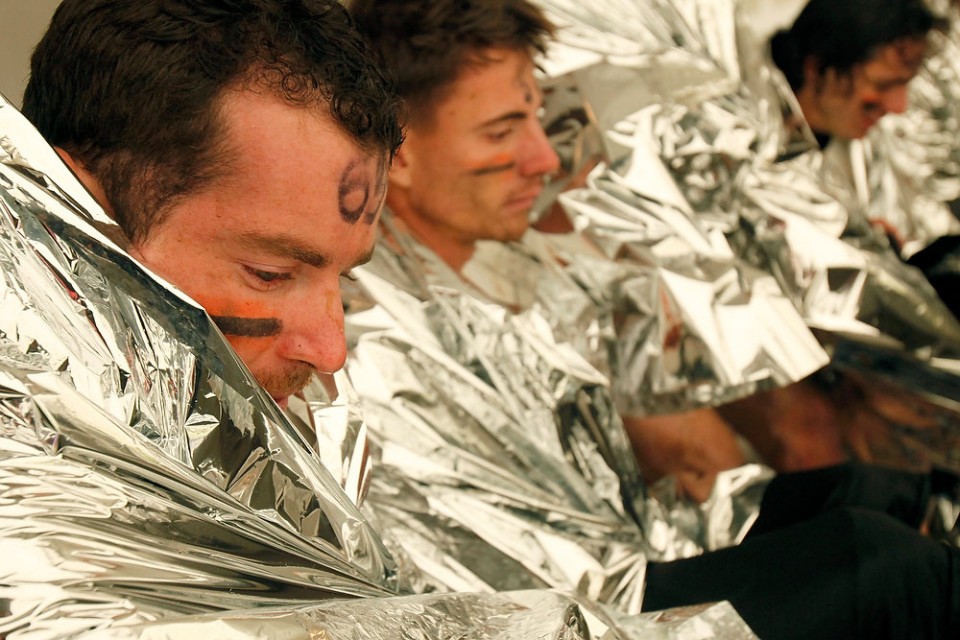
My belief in the need for this Hack came on the coldest night of my life back in 2012. These hours of suffering also laid the groundwork for my inventing of the Neptune Thermoregulation System but no this article is not about promoting its use. 2012 was my first World’s Toughest Mudder (WTM) but it was the second year that this event was held. This was also before there was such a thing at the WTM Facebook Community, so I really had no idea what I was getting into except for the little information that former Navy SEAL, Stew Smith, and ultra runner, Jared Busen, could provide me on how to prepare for a 24 hour event that would be in and out of water. Even the local dive professionals were like “you want to do what while wearing a wetsuit?”
 I went out there to face what would be one of the most difficult experiences of my life and during the day the temperatures were around 50⁰ which wasn’t bad but at night they dipped to like 29⁰. Ice was forming on obstacles and I ended up having to walk for two of the10-mile laps with an injured friend. It was during these eight hours that at about 1:00 AM I was doing voluntary burpees in order to prevent hypothermia. I remember being in a warming tent pouring hot soup on my shoes and in walks the only female I’d seen on the course in a while.
I went out there to face what would be one of the most difficult experiences of my life and during the day the temperatures were around 50⁰ which wasn’t bad but at night they dipped to like 29⁰. Ice was forming on obstacles and I ended up having to walk for two of the10-mile laps with an injured friend. It was during these eight hours that at about 1:00 AM I was doing voluntary burpees in order to prevent hypothermia. I remember being in a warming tent pouring hot soup on my shoes and in walks the only female I’d seen on the course in a while.
Some chick wearing a teal hat; I think her name was Amanda or something?? I remember thinking to myself around this time, “we should not have to deal with this. I have to be better prepared next year!” The first version of this hack was a video. However, putting all of this info it into writing was necessary so that it could be used as a reference during preparation.
It is my hope, with the help of this Hack, Eric Jenkins’s First Timers Facebook Group as well as new gear options like Deanna Blegg’s BleggMits, and the Neptune Thermoregulations System, that none of new class of WTM rookies will never know what temporary peripheral neuropathy is nor be subjected to the horrors of seeing a warming tent full of hypothermic mudders. Many “noobs” will not take this information to heart and think they know better. However, at WTM you either come prepared or Mother Nature will win. It can even take down the toughest of Mudders! This article is long but I can assure you, very necessary!
Science of Thermoregulation:
 The human body cools itself in three ways. These cooling effects can happen individually or all at the same time depending on the environment. Those ways are the following:
The human body cools itself in three ways. These cooling effects can happen individually or all at the same time depending on the environment. Those ways are the following:
- Conduction– the transfer of heat being emitted by one body and then absorbed by another (placing ice on an injury)
- Convection– the transfer of heat through the circulation of air (sitting in front of a fan to cool down)
- Evaporation– reduction in temperature resulting from the evaporation of sweat, which removes latent heat from the surface of the skin.
It’s all fine and dandy to know the different ways in which we regulate body temperature, but the key is how this all applies to the environment in which we will be competing. I will review each and how they work to together to thermo regulate participants during the WTM.
Sweating is probably the most effective method of heat loss for the human body. The evaporation of that sweat helps remove heat that is right next to the skin. This air next to the skin is warm due to the body conducting heat and warming it up. Keeping this warm air near the skin moving is the key to our loss of heat. This is the purpose of Under Armour type fabric. This clothing wicks away the moisture (speeding evaporation), allows air transfer to recycle the warm air next to the skin, and accomplishing this with a fabric that won’t absorb the moisture, allowing it to dry quickly. The “Cold Gear” Under Armour fabric adds that fuzzy underneath layer to create a space between the compression shirt and your skin.
This space allows some of the air next to the skin that has been warm by our body heat to be held next to the skin to help insulate you from the colder air outside. This works great unless the fabric is soaked.
Convection cooling comes in when the air is moving which further helps speed the other two processes. Every runner is keenly aware the “cooking” effect that happens on a warm day with no breeze when you have to stop at a stoplight and you start to overheat. At least while running the air is moving!!! Fortunately or unfortunately for us, the Nevada desert is always breezy because of the constant turnover of surface warm air and cooler atmospheric air and vice versa. Sometimes there is too much wind as in the 2014 sandstorm. Pray for moderate temperate change, so we can avoid a repeat of this!!!
Why is all of this such a big deal when it comes to the WTM?
The reason is the combination of warm day/ cold night, and the fact we are constantly in and out of the water; oh and the fact this event lasts 24 hours means you basically have to have gear for everything! Early in the race, when you are fresh, you will be moving fairly quickly and generating a decent amount of heat while running in the desert sun. However, as you fatigue, you naturally slow down to a trot or even hiking. This coincides with the arrival of night ops when the temperature in the desert plummets. Now your normal race clothing cannot keep you warm. This is where the wetsuits comes in. The problem is those suits weren’t designed to run in. Keep in mind that during the evening the temperatures are still mild.
This is when you will want options like Frogg Skinz, a Neptune, or maybe a shorty wetsuit until it gets colder. Overheating is a real problem in a wetsuit when you are not actually in the water. Understanding how your body responds to overheating is a real key to not getting yourself DQ’d due to hypothermia at WTM. #1 rule, if you are overheating while wearing a wetsuit NEVER completely remove it! Simply take it down to your waste and wear it like that for a while. In addition, remember that the wetsuit is designed to create a temperature stable environment while you are in the water. Your insulated clothing attempts to do this out of the water. I’m going to break down these differences so you can better understand.

- Clothing
- Designed to provide a temperature stable environment on land
- Light summer clothing allows you to shed body heat as best possible. It’s usually lighter in color so it absorbs less light heat from the sun.
- Designed to provide a temperature stable environment on land
- More insulated winter clothing is designed to hold your body heat in and provide an air barrier to the colder air outside. Layering assists this by helping trap more air inside your clothes and therefore creating a larger air barrier.
- The problem with nearly all clothing is it flattens when it gets wet and it loses its ability to trap air. On top of that, the wet clothing now sucks heat from the skin because of water’s ability to absorb heat. Now your wet clothing can actually make you colder whereas bare skin would allow the water to quickly evaporate. Not to mention the fact that the soaked clothing is now adding weight this is not good when you have to climb obstacles.
- Wetsuit
- Designed to provide a stable temperature environment while in the water.
- The wetsuit traps a small amount of water inside the suit which is then warmed by the body through conduction. This provides a much more efficient barrier against the cold water you are swimming in because water is such a good insulator of heat. The MM rubber thickness adds another level of insulation. The idea is that your body will continue to warm the water inside the suit faster than the cold water in which you are submerged can draw that heat out of the suit. The longer you are in the water or the colder water the more important the MM thickness of the suit. Also, make sure that your suit fits correctly. If it does not then you will have too much water transfer and you will get cold.
- The key thing to remember about wetsuits is body heat transfer out of the suit occurs in only one way. This is through conduction. The suit will not allow air to pass through it nor perspiration to exit as a fabric like Gore-Tex will. This means that the heat must be transferred to the suit and then conducted to the outside environment.
- Outside of the water your suit will shed most of that insulating water quickly. This leaves only a thin layer of cold, wet rubber between you and the cold air. This can cause a quick drop in body temperature if you aren’t moving fast enough. I invented the Neptune Thermoregulation System to specifically help in this instance as it produces its own heat and help insult you to assist in your maintenance of core body. (www.neptuneperformance.com)
- We also lose a lot of heat through our heads so make sure to have a neoprene hood on at all times during the night when it’s cold. If you get hot then switch to a swim cap.
- Since conduction is the only option for heat transfer you have to be smart and understand how to use this knowledge. Basically, because most suits are black, the sun will warm it quickly during the day, so be careful not to overheat. You can quickly “cook” in the suit, so unzip it if necessary or flood the suit when you hit the water. At night, keep the outside air off the suit. Wear a windbreaker to accomplish this. This is a must during high winds!
- Designed to provide a stable temperature environment while in the water.
Oh man that is a lot of background science!! Why so much? Because each person is different; some people run faster and generate more heat. Other people have more fat and are better insulated against the cold while others may be from a warm climate and may not be used to the cold at all. The basic information needs to be provided so that everyone can develop their own plan. The following points are what I believe is necessary for putting together a viable plan for WTM. My five years of WTM experience has taught me a lot, but unfortunately you will have to practice some of this ahead of time and then be ready to adjust on the fly during the race.
These are my keys points for success.
- Daytime 1:
- The sun and terrain will heat you up!
- Wet clothing will cool you down
- Sunscreen block out UV rays but also traps in heat
- There is no shade on this course
- Evening:
- At dusk (the sun drops behind the mountain range at around 4:30pm), the temperature will drop quickly over the course of about 1 lap so be prepared for this transition. FYI, better to run a little cold than too hot. Hyperthermia can happen fast and will shut down your performance and can take as much as a full lap to return. Hypothermia at WTM takes a little longer and long as you’re prepared and you keep moving. Hyperthermia will quickly become Hypothermia during the night if you completely remove your wetsuit. Please resist this urge!
- It’s good to have the option of a short wetsuit or suits of varying thickness. Make sure you bring EVERYTHING you have.
- Make sure you keep yourself warm throughout in order to preserve grip strength. This includes your hands. Good gloves are key. Everybody be sure to thank Deanna Blegg and her new BleggMits. These will be an awesome addition to your gear!
- You will need wool or neoprene socks to keep your feet warm.
- Make sure you have a windbreaker jacket. I also recommend windbreaker pants just in case. You MUST keep the wind off your suit and they won’t add much weight.
- Make sure you have a neoprene hood and a cap. You must keep your head warm. A mask and goggles are also good in high winds.
- Daytime 2:
- Transition slowly back to regular clothing. Accomplish this with your short or thinner wetsuit, etc. Your fatigue and hydration levels affect your thermoregulation. It’s much easier to get cold in this state. Also, the desert takes a bit to warm up.
- Have a second set of regular race clothes for day two. The last thing you want to do it put on cold wet clothes from the day before. The fact you must be out on the course after 1pm will make this change necessary because it will be warm again at the end of the race.
- Other points
- 2014 weather recap: High- 72⁰F (22⁰C)/ Low- 43⁰F (6⁰C). Wind gusts to 34mph
- 2015 weather recap: High- 69⁰F (21⁰C/ Low- 39⁰F (3.8⁰C).
- 2016 weather recap: High- 73°F (23°C/ Low- 55°F (14°C). Wind gusts were 6mph. (Warmest WTM to date)
- Ingesting warm liquids can warm you quickly from the inside so take advantage of the Outpost tent. Also know that warm food/ liquid can increase your need to go #2.
- The opposite is also true. Cold liquids will help cool you in the event you overheat.
The main key to conquering the World’s Toughest Mudder is coming prepared and never underestimating Mother Nature. Yes it’s going to suck! Yes you will get tired and cold. However, being mentally ready for the challenge is a real key. “Knowing is half the battle,” right? J Good luck out there!


1. Radiation is not “the transfer of heat being emitted by one body and then absorbed by another” as he claims. This is called conductive heat transfer. If the bodies are touching and are mostly solid or not moving, this is conduction.
2. Radiation is transfer of heat through electromagnetic waves. The Sun is radiant heat.
Conduction – Diffusion of energy due to random molecular motion
Convection – Diffusion of energy due to random molecular motion plus energy transfer due to bulk motion (advection)
Radiation – Energy transfer by electromagnetic waves
3. Evaporation is not a type of heat transfer. It is a type of mass transfer. When convection is combined with evaporation, convection is very efficient (i.e. sweating). When you talk about sweating and heat transfer, this is a subset of convection.
4. Wet clothing vs. bare skin. His reasons for wet clothing being colder than bare skin are incorrect but the conclusion will be the same. Wet clothing pulls heat from your body because it is high heat conductivity, high heat capacity (thermal capacitance), and high evaporative cooling ability. The problem is wet clothing keeps the water near your skin while it is evaporating. The evaporation pulls energy from your body. Bare skin would be warm because MOST of the water sheds off you and his not held near your body to evaporate. Bare skin would be better because LESS water evaporates near your skin vs. wet clothes. In any extreme case, both wet clothes and bare skin are just bad.
5. Sunscreen effect on trapping heat in your body is negligible.
Very helpful. So basically, what clothes would you wear: a) during the day when it’s warmer; b) under your wetsuit when temp drops.